Deer Rifles That Endure
by Wayne van Zwoll
It’s uniquely American, and common even among casual hunters. The best of its type are timeless.
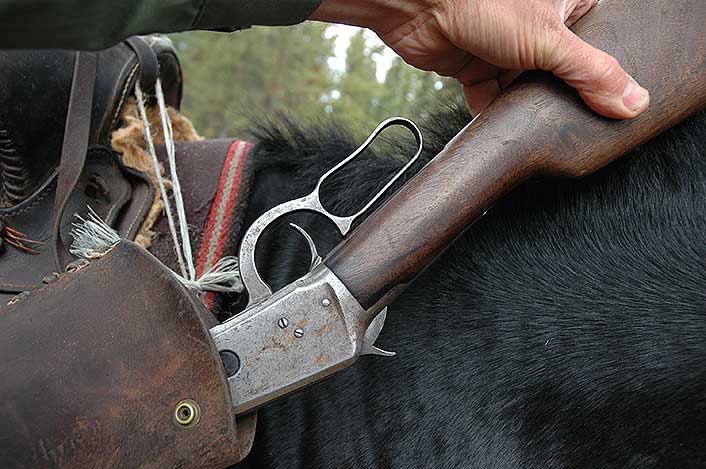
ITS STEEL SOUL tells you a rifle is hardware. It is often treated as such, aging in the closet or wedged behind the pickup seat. A box of ammo for such rifles lasts years.
Some rifles are better treated – as if there was a pulse beneath the metal. They’re stored carefully, handled often, fired even when there’s no game in season.
“I got it from a sheepherder for fifty bucks.” My pal handed me the Winchester, a saddle-ring 94 carbine that in new condition would have sparked a bidding war among collectors. It was, alas, hard-used, its stock finish gone, the metal silvered. Screw heads were badly chewed. The bore was dark as the inside of a stovepipe, almost surely pitted. “Take it to the range. See if it shoots.”
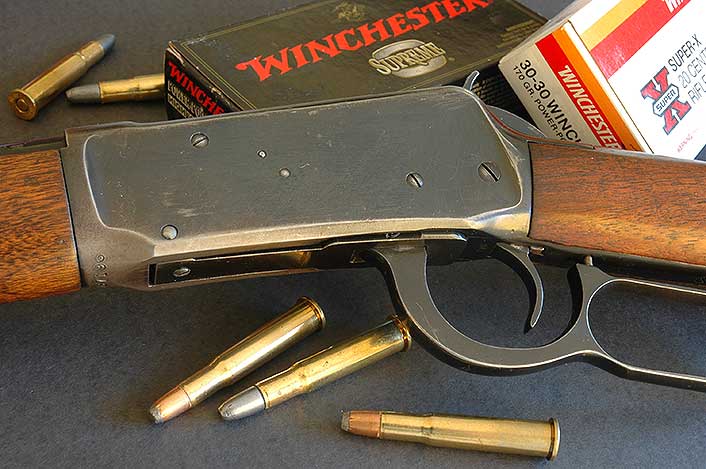
I did. That .25-35 drilled a 1-inch triangle at 100 yards. As I can’t see open sights that well, I had to lay such results to blind luck. Then again, some rifles have magic. Deer rifles, especially. Like the 1899 Savage I clutched last fall, flat on the prairie, sucking sand behind short grass as a buck eased my way….
By the end of the 18th century, the flintlock rifle of the Northeast had taken a recognizable shape. The “Kentucky” was long and lean, with brass furnishings. Its small bore conserved lead. Oddly enough, its archetype came from Pennsylvania shops run by German immigrants. As settlement pushed past thick forests with few deer into a wilderness with bigger game and fewer gunsmiths, this long-rifle became the “Southern rifle,” hurling heavier balls. Its spawn, the Plains rifle, shared its iron fittings but had a shorter, big-bore barrel for easy carry on horseback and lethal hits on bison and grizzlies. During the brief period of the Rendezvous (1820s), Ohio brothers Jake and Sam Hawken built the most famous of these rifles in their St. Louis shop. Hawken-style rifles remained popular well into the era of repeating rifles.
One of those repeaters would establish the form of America’s deer rifle.
In the late 1840s Walter Hunt developed a lever rifle with a pill-box device to advance primers. A tube under the barrel held a stack of “rocket balls” – hollow-base bullets with black powder secured in the cavities by paper caps. Gunsmithing by Lewis Jennings, Horace Smith and Daniel Wesson improved this “Volitional Repeater.” Oliver Fisher Winchester was one of 40 New York investors who bought into the project, and was named to head a new company. When it floundered, Winchester purchased all assets and then assigned bright young B. Tyler Henry to overhaul the Hunt repeater. The brass-frame Henry rifle served Union troops during the Civil War, then fathered the Model 1866 that saved Oliver Winchester’s New Haven Arms Company from bankruptcy. John M. Browning fashioned a stronger lock-up, after his dropping-block single-shot action – and designed for Winchester its 1886, 1892 and 1894 rifles.
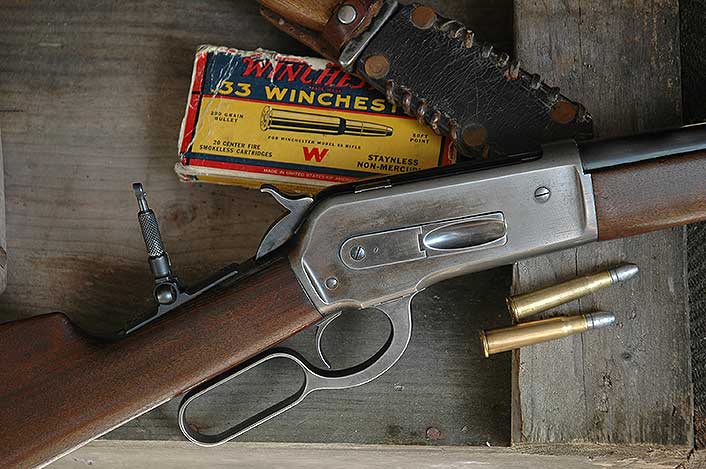
In its day the Henry must have pleased deer hunters. But its 216-grain bullet, driven by 26 grains of black powder, clocked only 1,025 fps. Hawken muzzle-loaders were far more potent! Ditto the single-shot Remington Rolling Block, Sharps 1874 and (Browning’s) Winchester 1885 cartridge rifles. Still, the lever-action was slim and lightweight, and spewed a tube-full of firepower at a headlong rate. When Colt chambered its Model 1873 Peacemaker revolver for the .44-40 cartridge Winchester had introduced in its 1873 lever rifle, hunters and homesteaders flocked to buy both.
The advent of smokeless powder in the early ‘90s blessed hunters with new rifles and cartridges. The .44-40 appeared in the short-action Winchester 1892 and Marlin 1894 rifles. Winchester announced its Model 1894 rifle in October of that year, in .32-40 and .38-55, both black-powder rounds for Ballard target rifles. The .30-30 and .25-35 appeared as smokeless chamberings in August, 1895, when the New Haven firm first cataloged nickel-steel barrels. The .32 Special joined the roster in 1902. With the .30-30, the .32 Special long outlived the 1894’s original offerings, leaving the line in 1973.
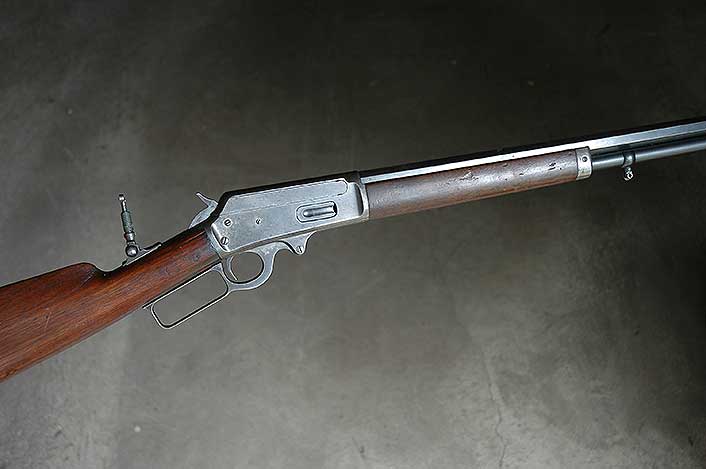
Marlin’s Model 1893 arrived just before Winchester’s 1894. It was bored for the same cartridges: .32-40-165 and .38-55-255 (a .375-bore round). Marlin soon added the .30-30 and .32 Special – also the .25-36 Marlin, fashioned in 1895 by William V. Lowe, who called it the .25-37. The Marlin’s solid-top receiver made it more rigid and weather-proof than the Winchester’s. Later, it would be hailed by hunters who wanted to mount scopes low and securely over the bore. Model 1893 rifles first retailed for $13.75. That, brethren, is less than you’ll pay now to fill a five-gallon gasoline can. The well-used 1893 I bought a few years ago cost me well into four figures, without an interrupting decimal!
By the time Marlin announced its new Model 36 lever-action in 1936, the 1893 and Winchester’s 1894 had shed their black-powder rounds. Marlin listed only the .30-30 and .32 Special in the 36. The .32 Special’s 170-grain .321 bullet does just what the .30-30’s 170-grain .307 or .308 bullet does, aloft and in deer. But some hunters favored the .32.
Ed Broder did. On November 25, 1926, he and two pals drove a 1914 Model T 100 miles from Edmonton to Chip Lake, Alberta. They stopped at a sawmill camp to hire a team of horses and a sleigh, reaching the lake cabin in a foot of snow. Keen to hunt, Broder grabbed his rifle and in heavy timber soon came upon a large deer track. He stayed with the prints for a half mile, to a fresh bed. The deer could not be far away. “I tracked him into a jackpine swamp,” he reported.” There I found where two moose had crossed. I had to decide between moose and deer.” The moose would likely take longer to reel in, and limited daylight remained. So Ed chose the deer, trailing it with care. Presently, in a clearing, he spied the buck. The animal was facing away “I’d have to take a spine shot. So I waited until the animal raised its head, then pulled up my .32 Special and fired.” The buck collapsed. “I thought: What big antlers!” Ninety years later, Ed Broder’s Alberta mule deer remains, by Boone and Crockett measure, the best of its kind ever taken.

My 1893 Marlin is a .32 Special, with pre-WW 1 upgrades. It has a pistol grip and shotgun butt, a 23-inch half-round, half-octagon barrel over a 2/3 magazine. It’s also a takedown rifle, with quarter-turn, interrupted-thread breeching. The metal has aged gracefully, leaving little blue, but no pits or scars either. Straight-grain walnut shows neither crack nor oil stain. There’s no play in the barrel when cinched snug. At the range, it performs better than a glance into the storm-drain bore would have you believe. To check zero with its open sights, I pasted a bullseye at 50 yards, then thumbed in 165-grain Hornady FTX loads. They drilled a .55-inch delta. Magic. That group was particularly satisfying because long ago I’d been fed the old saw that .32 Special bores failed rapidly once they lost their edge. While their 1-in-16 rifling sheds black powder fouling better than does the 1-in-12 twist in .30-30 bores, “ it’s barely adequate to stabilize bullets. A .32 Special’s like a sheep: just waiting to die. A .30-30 barrel shoots straight until you can’t see rifling at all.” Today you might call that fake news.
Another fine deer round too soon dismissed was the .303 Savage, which appeared in 1895. Three years earlier the Krag-Jorgensen, a bolt-action in an age defined by bolt-actions, had beaten Savage’s No. 1 hammerless lever rifle in ordnance trials at Governor’s Island, New York. The Krag would spend just a decade in uniform; offspring of the Savage No. 1 would last a century! Trimming the No. 1 for hunters, 35-year-old Savage pared magazine capacity to five and opened the lever for three fingers. In April, 1894, he founded the Savage Repeating Arms Company in Utica, New York. The next year Marlin Firearms built the first Savage Model 1895s in .303 Savage.

The .303’s 190-grain softpoint at 2,100 fps hit harder than its competitors and was soon toppling moose and grizzlies. In 1899 Savage tweaked his lever rifle, a year later chambering it to .30 WCF. The .25-35, .32-40 and .38-55 followed in 1903 (essentially reversing their order in the 1893 Marlin and 1894 Winchester!). The .303 gave a little ground to the .30-30, more in 1913 to the frisky .250/3000, wildcatted by Charles Newton for the 1899. What killed the .303 was the .300 Savage, which drove 180-grain bullets at 2,450 fps. Oddly, neither the .303 nor early .300 Savage loads featured the ballistically superior pointed bullets the 1899’s spool fed safely, but that weren’t tenable in tube-fed Winchesters and Marlins!
The Model 1899 flat in my palm, pressed to the earth, was built in 1909. Bored for the .25-35, it wore a tang sight far from the blade near the end of the 26-inch barrel. Chin on dirt as the buck advanced, I thought not about the merits of a long sight radius. Could I find that blade, a fist above the earth, behind a thin screen of grass? Raising my head or rifle would send the animal off.
At 200 yards the animal would have dropped to a shot from any scoped bolt rifle. I’d set my limit at half that distance. Slowly the buck closed. Finger taut on the trigger, I saw him pass at 100 steps. Don’t fire until he stops. I’d abandoned hope when he reversed course and paused, staring my way. The snap of the .25 sounded rimfire-thin. The buck dashed off, 20 yards, 40. He faltered; then he was down.
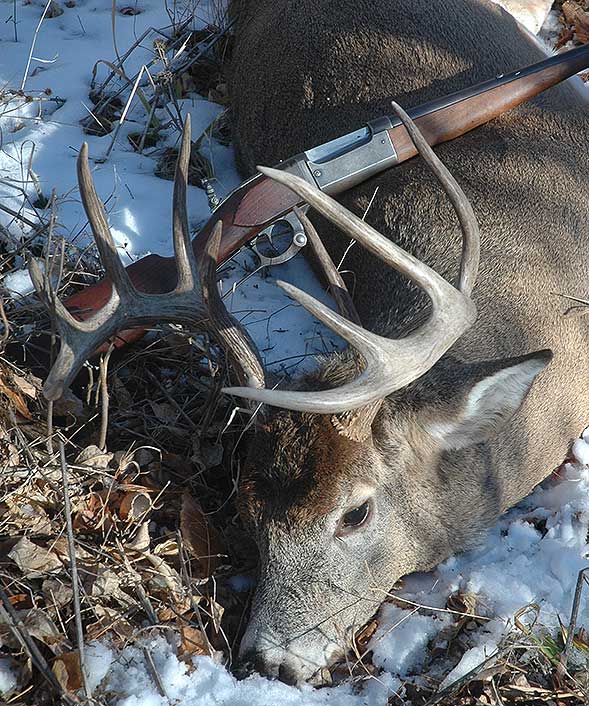
In 1930 the exposed-hammer, lever-action deer rifle faced a new challenge, as 24-year-old Texan Bill Weaver introduced his 330 rifle-scope. The ¾-inch steel tube perched in a “grasshopper” mount that resembled great wire clip. Scope and mount sold for $19. A heavy post reticle and dim image limited the effective reach of this 3x optic. But bullets were still shaped like bedrolls, and “fast” was still 2,000 fps.
By 1949 bolt-action rifles like Winchester’s Model 70 and the Remington 721/722 were drilled for scope mounts. So too the 99 Savage – also the 336 Marlin, which supplanted the Model 36 that year. Leupold had announced its first scope, the Plainsman, in ‘47, as Weaver introduced its K-series. Lyman’s Alaskan was by then nearly a decade in service. But despite in-roads from bolt rifles and cartridges that tapped the reach of optical sights, lever-actions still sold well. In 1953 Marlin added the .35 Remington to its 336 roster, and Winchester presented its two-millionth Model 94 to President Dwight Eisenhower!
In October of that year Ed Stockwell hiked into Arizona’s rugged Santa Rita Mountains. He and his partner split at the foot of a ridge, Ed taking the high route. Scrambling up into the rocks, he flushed two Coues bucks. They topped the ridge instantly and were gone. Ed dashed ahead, but despaired of a shot. The deer had vanished. Turning to descend, he glimpsed movement behind an oak. The biggest buck emerged 60 yards away. Ed fired quickly, killing the deer with his iron-sighted Savage 99. The antlers, he now saw, were huge! Later, they scored over 144 – so many inches the Boone & Crockett Club took pains to ensure this was indeed a Coues buck. It remains a world’s record.
When I started hunting deer, about a decade later, a new Winchester 94 cost $89.50. Marlin and Savage lever rifles shared that price stratosphere. So I found a Short Magazine Lee Enfield whose battle scars got me into the woods for $30. Williams iron sights, and a walnut blank from Herters, added another $22 over the next winter. Michigan’s $5 deer licenses became a bigger burden, however, when after three seasons I’d killed nothing. Then, one magical day, a pair of whitetails rocketed through a stand of poplars 90 yards off. I fired at the first, swinging as if at a grouse. To my astonishment, it somersaulted, dead.

Bolt rifles have since pulled me too often from lever-actions, but I hunt more now with classic deer guns. And not just for deer. Savage 1899s in .25-35 and .303 took my last two pronghorns. A Model 99 in .300 got another, a 99A in .250 /3000 another still. My Marlin 1895 and a Browning/Winchester 71 in .308 Marlin Express and .348 Improved accounted for two more. All with iron sights, of course. I’ve taken a couple of elk with a scoped Marlin 336, a .30-30 that also collected a mule deer and a pronghorn. A heavy Alaskan black bear led me on a sneak through dense coastal cover until the wind shifted. The animal stiffened. I found a shot alley and fired that .30-30 from 80 yards. Heart-shot, the bear dashed into the forest, where I found it dying as light faded.
Deer rifles have gained horsepower. Winchester developed the .348 in 1935 for the elegant Model 71, a follow-up to the 1886. Rifle and cartridge expired in 1957. Eight years later Marlin announced a 336 in .444 Marlin, developed by Thomas Robinson and Arthur Burns from the .30-06 hull. Its 240-grain and subsequent 265-grain bullets carried 1 ½ tons of energy out the muzzle. The spate of modern lever rifles in .45-70 aren’t limited to black-powder pressures; the old military load of a 405-grain bullet at 1,300 fps has been trumped by ammunition driving 325-grain bullets 2,000 fps. The .308 and .338 Marlin Express from Hornady’s shop deliver .308- and .30-06-class moxy from Marlin’s new Model 1895.
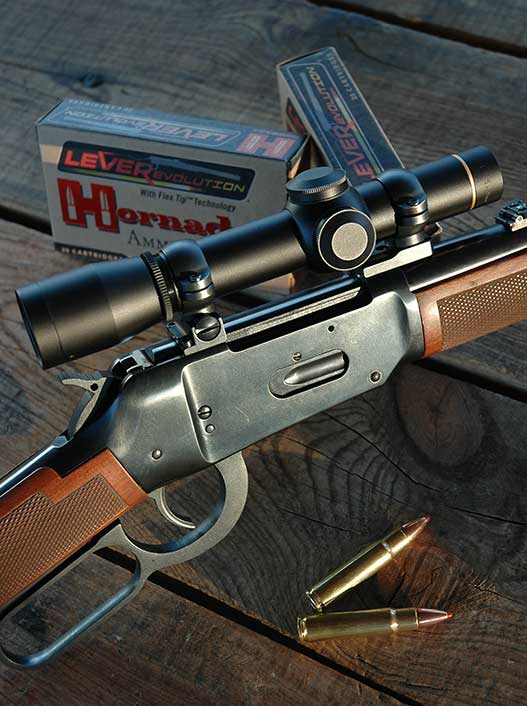
Winchester added muscle to its Model 94 with the .375 Winchester in a beefed-up 94 Big Bore in 1978. It hurled a 200-grain bullet at 2,200 fps, a 250 at 1,900. The .307 and .356 Winchester, introduced five years later, came as close to duplicating the .308 and .358 rounds as was possible in the rear-locking action. From 20-inch carbines, the .307’s 180-grain bullet clocks 2,360 fps, the .356’s 250-grain 2,050. Compared to such performance, early deer loads were anemic: 117-grain bullets from the .25-36 Marlin clocked 1,850 fps, 165s from the .32-40 just 1,450, 255s from the .38-55 only 1,300. The .30-30 first sent 160-grain softpoints at 1,960 fps.
The intimacy of shooting fast and close appeals to me. One of my best blacktail bucks dropped to a borrowed Winchester 94 I cycled lickety-split as the buck sprinted through cut-over 20 steps away and vanished in thick willows. Three of my four shots struck, the last shredding vitals. The deer expired. Not long after that blacktail episode I carried a Savage 99 into second-growth conifers. A whitetail sped away, but slowed as he winked out between boles. Suspecting other deer, I circled crosswind. A handful of deer sifted through the trees, foraging. I pegged the sight to an opening. The buck appeared, sunfished at the shot and jetted away. I found no blood, but a pea-size bit of pink tissue caught my eye. The deer had died in mid-stride after making a hard turn, a common last act of fatally hit game.
Last fall I borrowed again the 1899 Savage that had taken the Wyoming pronghorn to still-hunt a Dakota bottom thick with oaks on the hem of a treed swamp. Mid-morning, I spied a whitetail crossing a hillock in tall weeds. It was headed to the swamp. An opening showed tall antlers. As the buck moved behind a hummock, I hunched low and scooted forward. We came clear of weed cover at the same time. Bead on rib, I fired offhand and ran the lever as the deer raced for the timber. The hit had been solid, the bullet angling forward from mid-rib. But clearly the 110-grain .25-35 bullet had not exited. Tiny blood-stains, sparingly leaked to only one side of the track, led me to into the swamp, where I was sure to lose the trail. Then, there! Offhand, I slipped a bullet through the slot to the white tail-fringe. Another hit. But I fired again. And again.
Crossing water to reach the deer, I found it dead, a fine buck taken the old-fashioned way. A deer rifle is not just hardware. It has a pulse. And, sometimes, magic.
Wayne van Zwoll has published 16 books and roughly 3,000 magazine articles on firearms and hunting. Five of his most popular books are: Shooter’s Bible Guide to Rifle Ballistics ($20), Shooter’s Bible Guide to Handloading ($20), Mastering Mule Deer ($25), Mastering the Art of Long-Range Shooting ($30) and Gun Digest Shooter’s Guide to Rifles ($20). Limited numbers are available, autographed, from Wayne at 2610 Highland Drive, Bridgeport WA 98813. Please add $4 shipping.
Stay Connected
- Got a Break in the Montana Missouri Breaks
- It Took Six Days but We Finally Slipped One Past the Bears and Wolves
- No Mule Deer This Fall – Whitetail TOAD!
- An Accounting of Four Idaho Bulls (Elk)
- Arizona Deer Hunt 2019: Good Times with Great Guys
- Caught a Hornady 143 ELDX Last Night
- Cookie’s 2019 Mule Deer Photo Run
- Let’s See Some Really Big Deer
- Alaskan Moose Hunt Success!
- Take a Mauser Hunting: An Important Message From The Mauser Rescue Society!
- Welcome 16 Gauge Reloaders! Check In Here.
- Off-Hand Rifle Shooting – EXPERT Advice
- BOWHUNTING: A Wide One!

